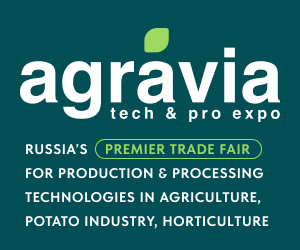A groundbreaking new potato variety—developed using KeyGene’s innovative 2S1 graft hybridization technique—has been officially granted plant breeders’ rights by the Netherlands Board for Plant Varieties. The breakthrough merges skin traits from one parent with the inner cellular structure of another, opening a new frontier in sustainable and precision breeding for vegetatively propagated crops.
KeyGene’s 2S1 Technique Redefines Potato Breeding
In a landmark development for the potato sector, KeyGene has introduced the world’s first commercially protected graft-hybrid potato variety using its proprietary 2S1 technique, marking a major shift in plant breeding. The Netherlands Board for Plant Varieties has granted full plant breeders’ rights, validating the variety as a novel and stable cultivar.
The 2S1 method allows researchers to combine the epidermal (skin) layer of one potato variety with the inner tissue layers of another, enabling the fusion of highly specialized traits from two separate genetic sources. In this case, the new variety unites:
- Skin from ‘Pimpernel’ – offering traits such as drought tolerance, insect repellence, and disease resistance
- Inner cells from ‘Bintje’ – a classic, high-yielding variety prized for its productivity and tuber quality
According to KeyGene, this graft-based hybrid has proven genetically stable over multiple generations, from seed potato to plant to harvest. All above-ground parts and tubers express the combined traits faithfully.
A New Era of Precision Breeding
While traditional hybridization often involves slow and random trait combinations over many breeding cycles, the 2S1 technique enables:
- Targeted trait integration
- Faster variety development
- Stable inheritance of complex characteristics
Historically, grafting between plant tissues has been observed naturally in old orchards, but KeyGene’s technology is the first to mechanize and control this process at a cellular level for modern breeding programs.
“We have made an old breeding dream finally come true,” said Jeroen Stuurman, lead developer of the technology. The 2S1 technique doesn’t just introduce a new tool—it reshapes how we think about vegetatively propagated crops, such as potatoes, fruit trees, and berries.
Implications for Sustainable Agriculture
This innovation arrives at a critical time when global agriculture faces increasing pressure to enhance yields, resist pests and climate stress, and shorten development cycles. For potatoes in particular—already the world’s third most important food crop, grown on over 17 million hectares globally—this could be a game-changer.
By reducing breeding timelines and allowing for custom trait stacking, KeyGene’s 2S1 could support:
- Reduced pesticide and water usage
- Climate-resilient crop development
- Niche market varieties tailored to local challenges
CEO Roeland van Ham emphasized the broader potential: “We also see opportunities in seed-propagated crops, where the 2S1 approach can speed up solutions to the toughest breeding challenges.”
The granting of plant breeders’ rights to the first skin-transplanted potato variety is more than a regulatory milestone—it’s a signal of what’s to come in modern agriculture. With KeyGene’s 2S1 technique, breeders now have a powerful tool to accelerate sustainable variety development and tailor crops with surgical precision. For farmers and scientists alike, this innovation holds tremendous promise for the future of food.

